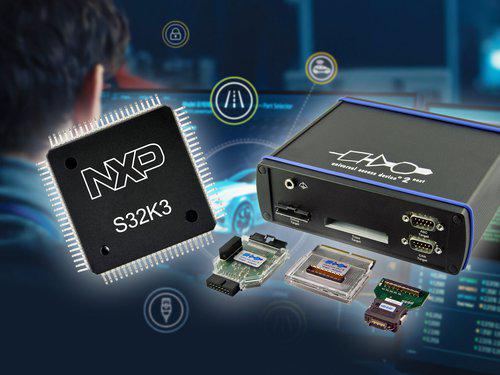PLS' UDE® supports NXP's new S32K3 MCU family with optimized debug, analysis and test functions
November 22, 2021
The latest version of the UDE® Universal Debug Engine from PLS Programmierbare Logik & Systeme now provides extensive debug and trace functions for NXP® Semiconductors’ new S32K3 automotive MCU family. S32K3 MCUs are based on the Arm® Cortex®-M7 core in single, dual and lockstep configurations for use in ISO 26262 functional safety applications up to ASIL D. Devices are offered in a range of flash memory sizes and pin-counts and include the latest security and connectivity peripherals. Complementing this is a package of safety-compliant Real-Time Drivers software for AUTOSAR and non-AUTOSAR applications, and safety and multi-core communication framework software.
In addition to comprehensive and interactive debug functions, PLS provides multiple visualization options for application states directly in the UDE® user interface enabling debugging, system analysis and testing of S32K3 MCUs. For MCUs with the dual-core configuration, debug functions such as multi-core run control for synchronous stop & start and multicore breakpoints are available. The latter are very useful in applications with shared code. Debugging and run-time analysis of multi-core applications is performed efficiently and in a user-friendly manner in a single debug session and within a common debugger instance. In addition, the Memtool integrated in UDE® provides functions that enable easy and safe programming of flash memory.
Particularly beneficial for getting started with S32K3 application development is the simple and intuitive handling of the UDE® user interface. This gives developers an unusually large amount of freedom to adapt to their individual preferences and needs. When moving to the S32K3 MCU family from another microcontroller only minimal training effort is required. For automated debugging and testing the UDE® also offers comprehensive scripting support with a unique feature being its independence from a specific scripting language. Thanks to the use of Microsoft COM as the base technology for the UDE's software API, developers can keep using their preferred scripting language such as Python, Perl, or JavaScript.
The devices UAD2pro, UAD2next, and UAD3+ of the Universal Access Device family from PLS ensure fast and reliable access to the S32K3 MCU via the Arm-specific Serial Wire Debug (SWD) interface. Program and data trace can also be captured using the Arm CoreSight Trace implementation. The UAD2next has 512 Mbytes of internal trace memory for recording while the UAD3+ has up to 4 GBytes. With the help of the recorded trace data, the UDE® can perform a very detailed analysis of the application’s run-time behavior and provides, among other things, special functions for profiling and code coverage. In addition, the data trace feature of the S32K3 MCU can be used for comprehensive run-time and task analysis of real-time operating systems. For this purpose, UDE® provides corresponding RTOS support add-ins. In addition to the clear presentation of operating system resources and objects, it also features a detailed visualization of task execution over time.
"Automotive customers in particular like to rely on proven tools when changing platforms. As a long-standing NXP Gold Partner PLS is pleased to provide a high-quality debugging, system analysis and test tool in time for the launch of the S32K3 family giving developers comprehensive and reliable support for their application development," says Jens Braunes, Product Marketing Manager at PLS.
"The S32K3 MCU family is the latest member of NXP's S32 automotive platform and is supported by a rich ecosystem of partners offering a variety of software, tools and design services," adds Carlos Prada, Global Partner Director Automotive Processing at NXP. "We are delighted to have PLS’ deep industry expertise on board with their portfolio of high-performance debug and trace tools."

